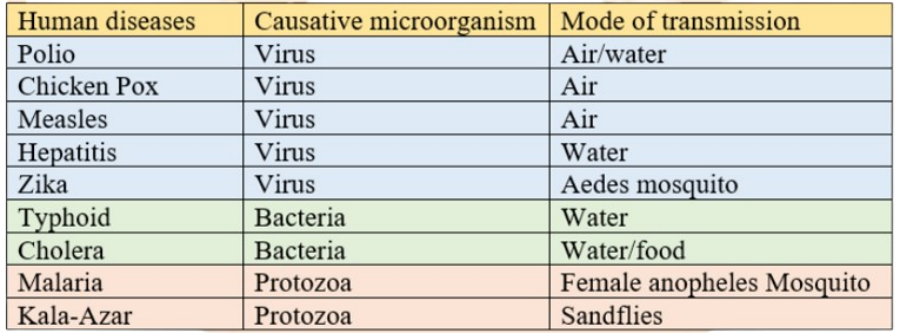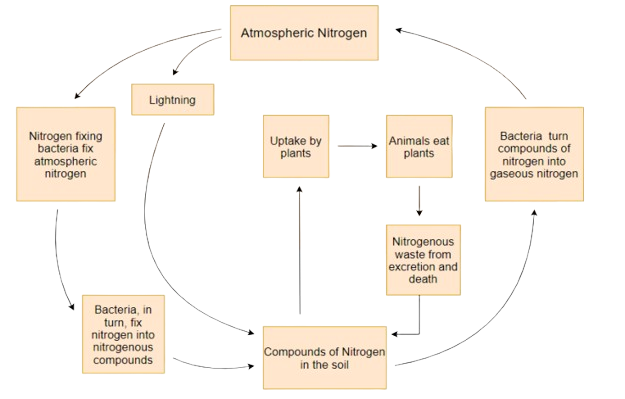Class 8 Science Chapter 2 Notes PDF on Microorganisms: Friend and Foe Download for FREE
FAQs on Microorganisms: Friend and Foe Class 8 Notes: CBSE Science Chapter 2
1. How are microorganisms used in Science Chapter Microorganisms: Friend and Foe Class 8 Notes?
As per Class 8th Science Chapter 2 notes, microbes are used to make food products, prepare new medicines, and different bioactive molecules at a very low cost.
2. What are pathogens in Science Chapter Microorganisms: Friend and Foe Class 8 Notes?
Pathogens are microorganisms that cause diseases in a host. They are generally parasites. Follow the notes of Science Class 8 Chapter 2 to find examples related to pathogens.
3. What are a carrier and a vector in class 8 science ch 2 notes?
A carrier is someone who is carrying pathogens and contaminating others. A vector is a carrier of diseases that contaminates a disease by biting a host. Study Chapter 2 Class 8 Science notes to find out more differences between a carrier and a vector.
4. What are Microorganisms according to Chapter 2 of Class 8 Science?
Microorganisms, often known as microbes, are living organisms that are invisible to the naked eye. They are only visible using a magnifying glass or a microscope. Depending on the kind, microbes can be unicellular or multicellular. Microorganisms, as indicated in Chapter 2 of Science Class 8, can be both hazardous and useful. They may be found anywhere. There are certain exceptions, such as fungus and algae, which humans can see without any special equipment when they infect food.
5. Where do Microorganisms live according to Chapter 2 of Class 8 Science?
Microorganisms may exist in a variety of conditions. Some, such as algae, can be found in water. The air contains bacteria and viruses, many of which cause sickness. Microbes such as archaea, fungus, protists, and others have been discovered within human and animal bodies on rare instances. Some bacteria, but not all, are tolerant to severe circumstances such as cold, heat, a lack of water, a high salt content, and a lack of oxygen in the environment.
6. Is a microorganism a friend or foe according to class 8 science chapter 2 notes?
Microorganisms can be both a friend and an adversary, according to Chapter 2 of Science Class 8. Several microorganisms are utilised in cooking, commercial and medical purposes, soil fertilisation, and other applications. On the other hand, some microorganisms are the cause of illness in people, plants, and animals. It should be noted that microorganisms are as much a part of our environment as other living beings and hence, they have an impact on nature in different ways.
7. In class 8 science chapter 2 notes what are the characteristics of Microorganisms?
Microorganisms are unicellular or multicellular organisms that cannot be seen by the naked eye. They are categorized into six major types as per their typical features: bacteria, protozoa, fungi, archaea, algae, and viruses. In the revision notes of Chapter 2 Class 8 Science provided by Vedantu, you can learn to distinguish between different kinds of microorganisms based on their peculiarities. You will also get a detailed understanding of the various uses of different microbes in this particular chapter.
8. What is the Nitrogen Cycle according to Class 8 Microorganisms friend and foe Notes?
The nitrogen cycle is the conversion of nitrogen in the environment into chemical forms. Plants require nitrogen to flourish, but they cannot take it directly from the air. Bacteria and green algae are microorganisms that help break down nitrogen and refill the soil with it. These nitrogen molecules are then utilised by plants, and through plants, they reach other living organisms. It is a natural procedure that does not need any deduction.
9. Why are microorganisms important in Chapter 2 for Class 8 Science?
They are important because they can be helpful, like in digestion and food production, or harmful, causing diseases and food spoilage.
10. What are some examples of beneficial microorganisms covered in Chapter 2 for Class 8 Science?
Examples include bacteria used in making yogurt and cheese, and fungi used in baking bread.































